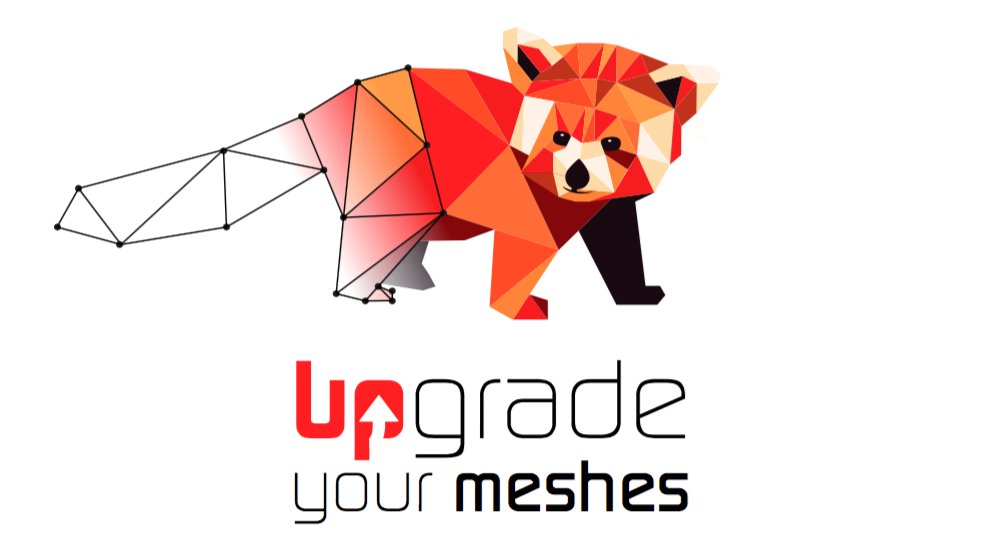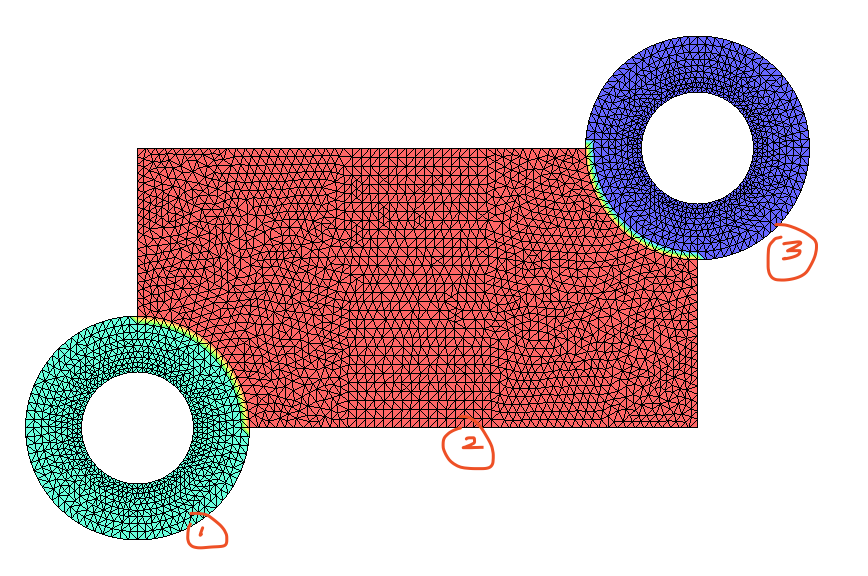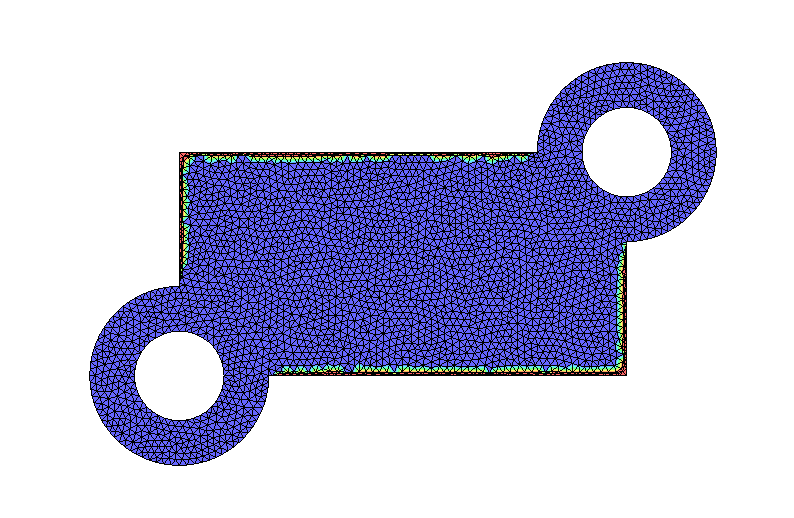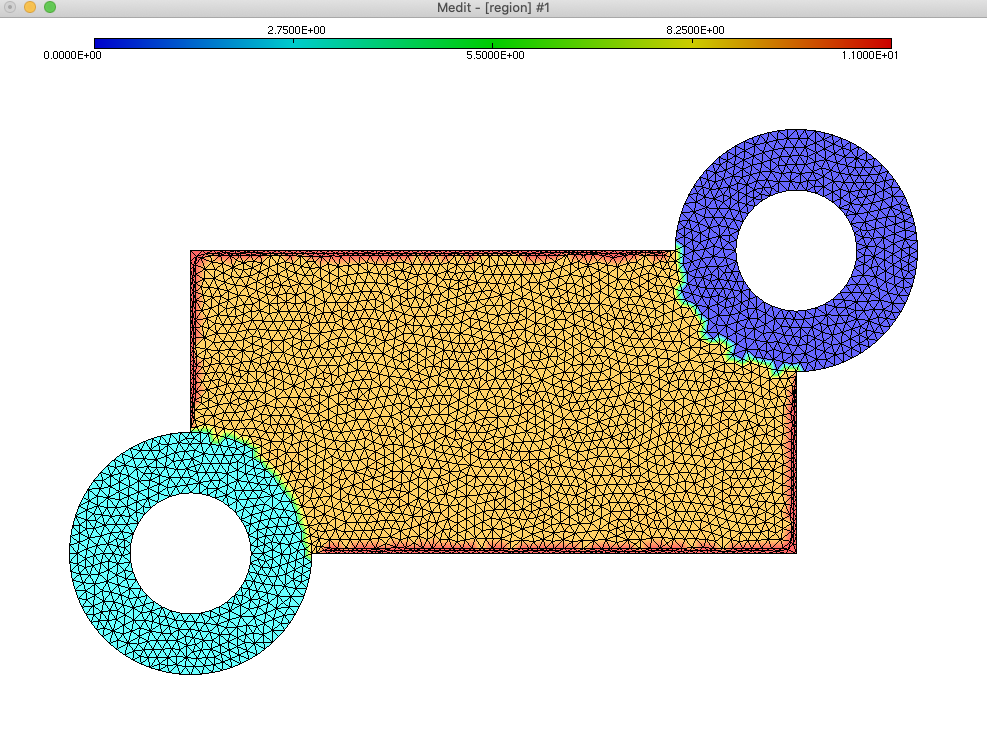Dear developers,
I met a problem when using MMG2d/3d to update mesh based on the level set function.
My original mesh contains 3 regions, with different region labels, as below:
Then I use the following command line to update the mesh based on the level set function:
mmg2d_O3 ./LvSet.mesh -sol ./LvSet.sol -ls -nr -hmax 8.0e-3 -hmin 5.0e-3
After that I checked the region label again, and found that the mesh was merged into a big region, as below:
So, would it be possible to keep the original region label after MMG2d/3d?
I uploaded the original mesh, and level set solution file. Please check.
Sincerely yours,
HaoLvSet.mesh (237.2 KB) LvSet.sol (12.0 KB)



